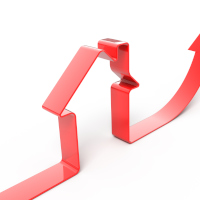‘Light at the end of the tunnel’: Property investors with equity woes
Despite some areas of Australia experiencing some “extremely volatile” property market fluctuations in the past 12 months, there is an “encouraging environment” for the second half of 2019, according to a new report.

The 12th edition of the PRDnationwide Australian Economic and Property Report, titled Light at the end of the tunnel, noted that while there has been a mixed bag for property markets across Australia, the outlook for house prices and sentiment are more positive moving forward.
The report, which looks at the impacts of economic indicators and monetary and fiscal policy on the property market, outlined that capital city and metropolitan markets continued to experience a softening in median house price growth in the 12 months to the first half of 2019, with prices dropping 3.2 per cent and 6.2 per cent, respectively.
However, it noted that regional markets remained resilient, recording a growth of 1.7 per cent during this time, with median house prices remaining affordable – with “promising” positive capital growth.
The report also suggested that investors have benefited from an increase in rental activity, with the national vacancy rate (as of May 2019) coming in at 2.2 per cent. According to PRDnationwide, this represents a “healthy” rental market when compared with the Real Estate Institute of Australia’s benchmark of 3.0 per cent.
It went on to state that while investor buying power had dropped recently, the current economic conditions could see a rebound.
The report stated that investors had traditionally accounted for around 35 per cent of all finance commitments in the past eight to 10 years, but this had dropped to around 30 per cent in the 12 months to April 2019 (with owner-occupier finance accounting for 71.5 per cent). Overall, owner-occupiers committed to $254.6 billion worth of loans in the 12 months to April 2019, whereas investors committed to $101.7 billion.
Residential construction across Australia amounted to $16.3 billion in the March quarter of 2019, which, PRDnationwide noted, represented a decline of 13.5 per cent in the past six months, bringing the amount of quarterly residential construction closer to the 10-year average of $13.5 billion.
But the property researchers were optimistic that a moderate slowdown in residential construction in the past six months will allow for current and scheduled property development to be absorbed by the market.
“This will create a more balanced level of supply and demand of property stock in the market,” it said.
The researchers went on to state that there has been a “quadrella” of positive policy news recently, which will positively impact the property market moving forward.
These include the fact that the Labor Party’s negative gearing and capital gains tax changes are off the table, a double interest rate cut, APRA’s mortgage serviceability guidelines being updated and curbs on investment lending eased, along with the government’s incoming First Home Buyers Loan Deposit Scheme (set to come into effect in 2020).
Indeed, it stated that these have all resulted in “a strong consumer sentiment bounce-back”, with Australian consumer sentiment hitting 100.7 index points in June 2019, moving into positive territory once again, while Australian business confidence has also been improving since the May federal election.
The report said that a boost in consumer confidence would result in an increase in consumer spending across all industries, including property.
The report concluded that these factors mean that there is “light at the end of the tunnel of uncertainty”, which could pave the way for a strong recovery of the Australian property market in the second half of 2019.
Dr Diaswati Mardiasmo, PRDnationwide’s national research manager, commented: “It is possible that despite all the uncertainties experienced in the past 12 months, that a quiet confidence is returning as we see light at the end of the tunnel on the back of changes in banking, economic, infrastructure and social policies.”
Tony Brasier, PRDnationwide’s chairman and managing director, added: “PRDnationwide remains committed to providing key resources to the real estate sector, including property investors, real estate agents, and informing the wider real estate industry. The latest release of the Australian Economic and Property Report 2019 continues this decade-long commitment.”
[Related: The suburbs tipped for growth in Queensland]

